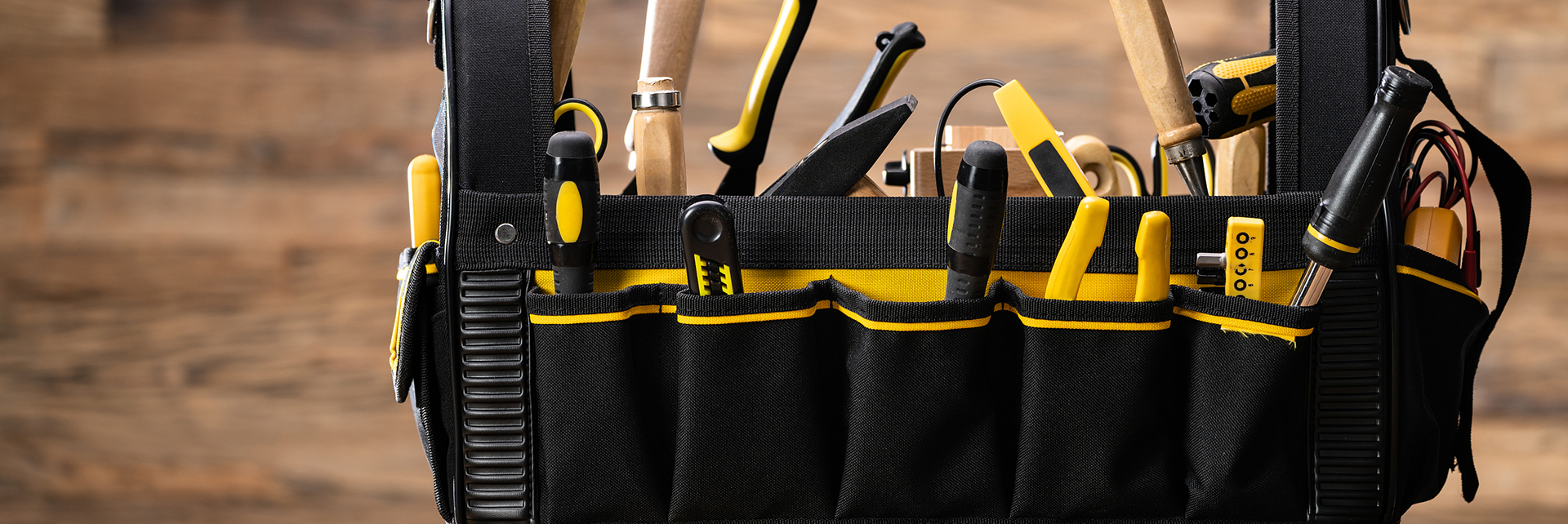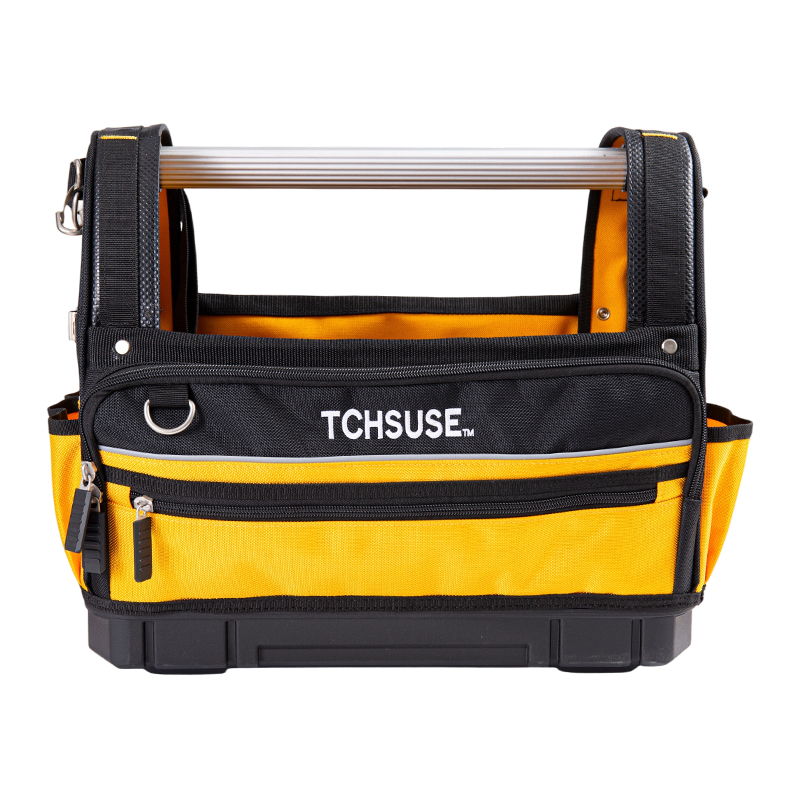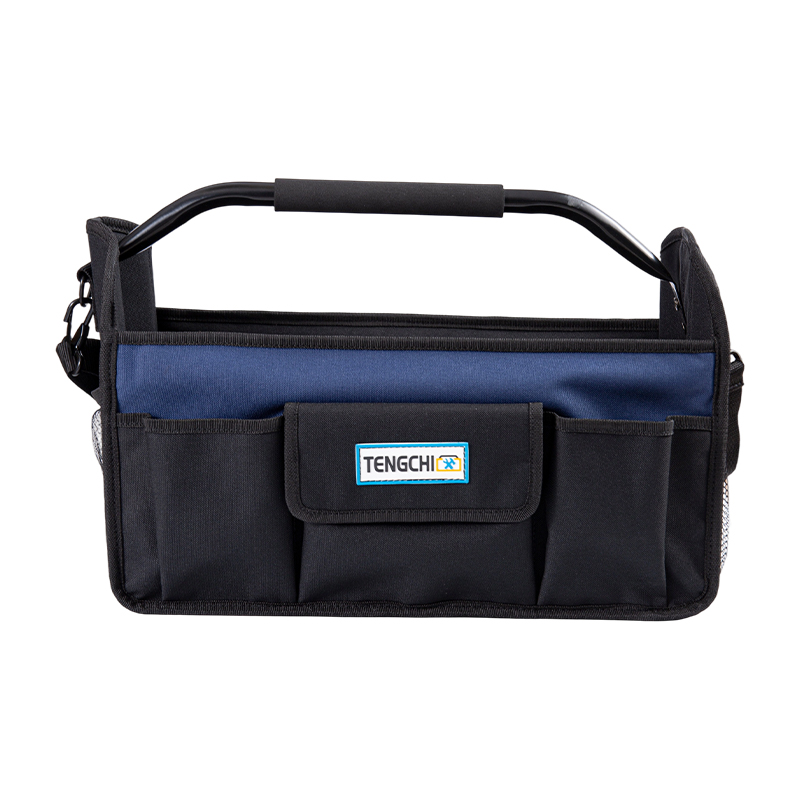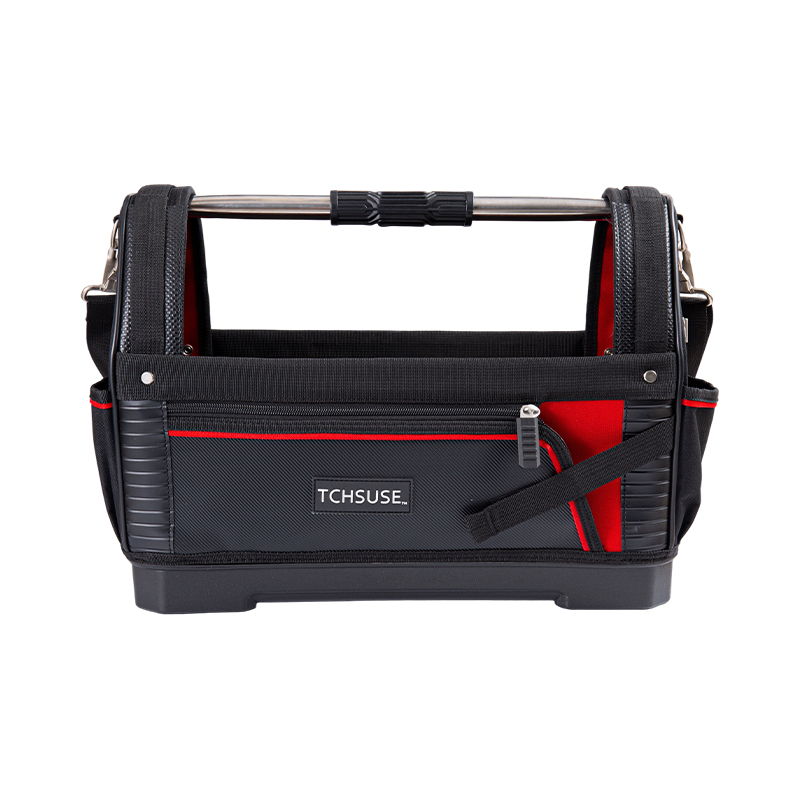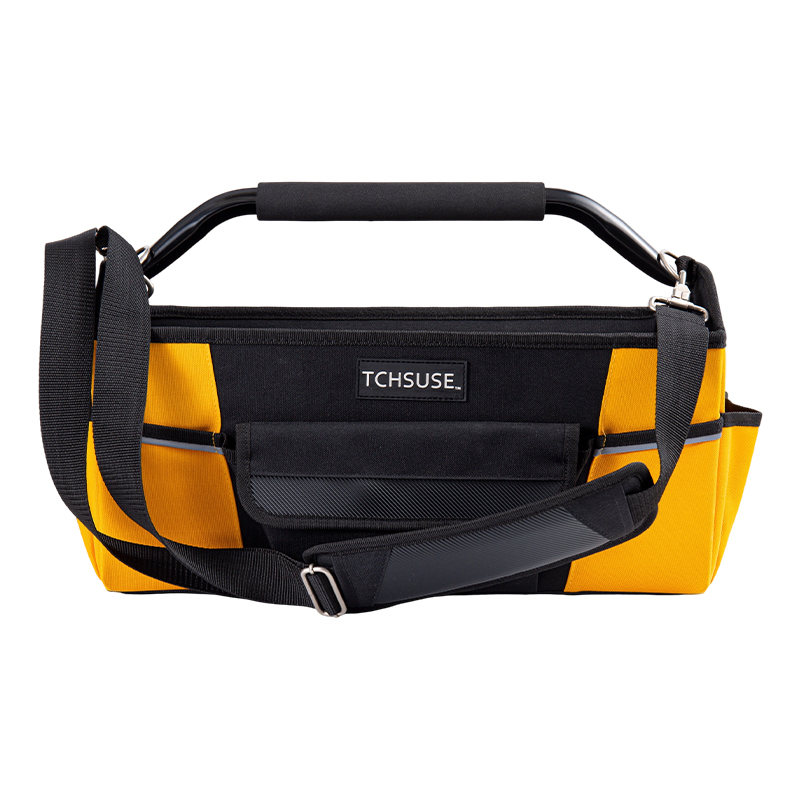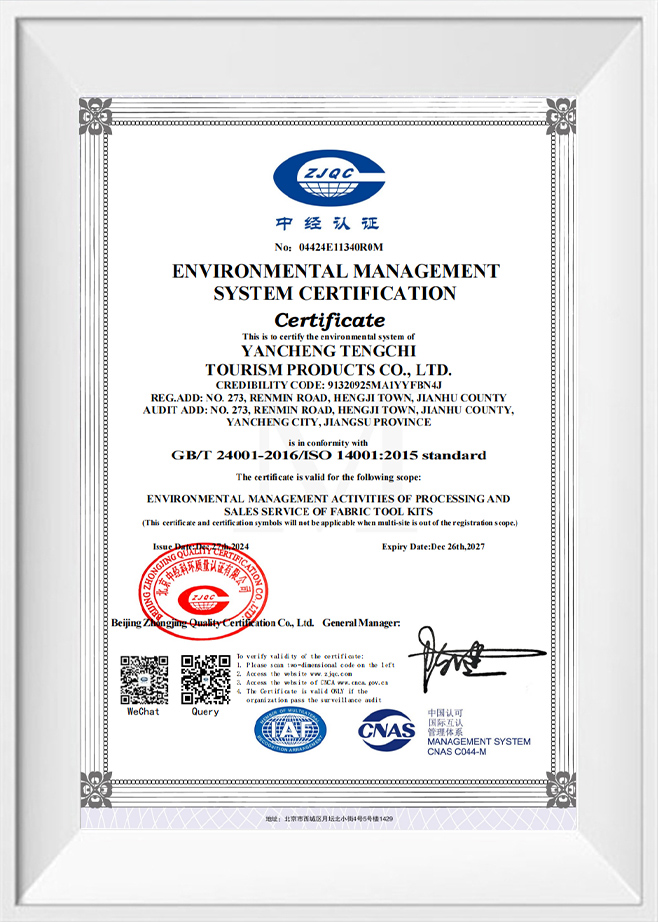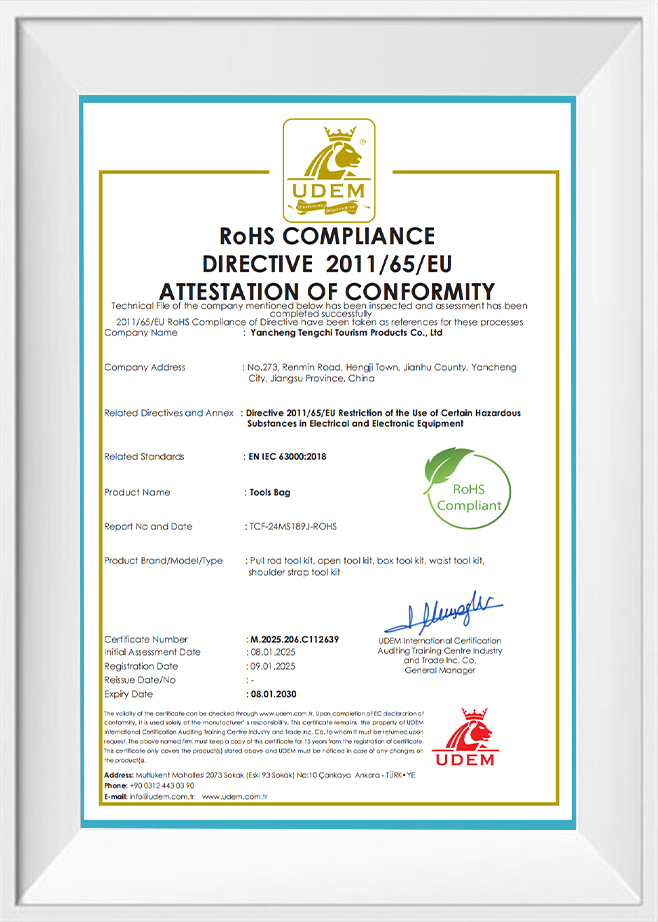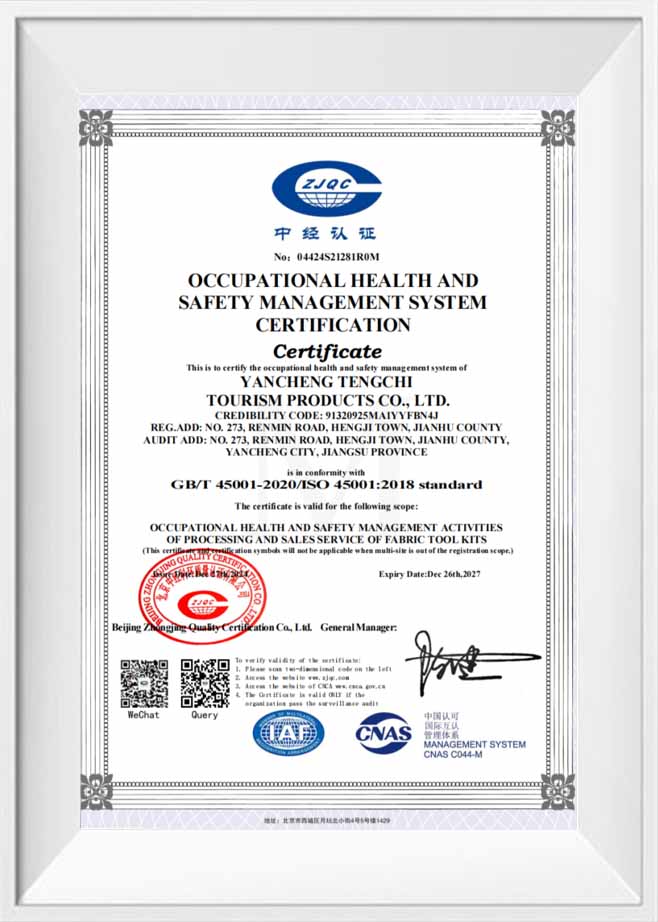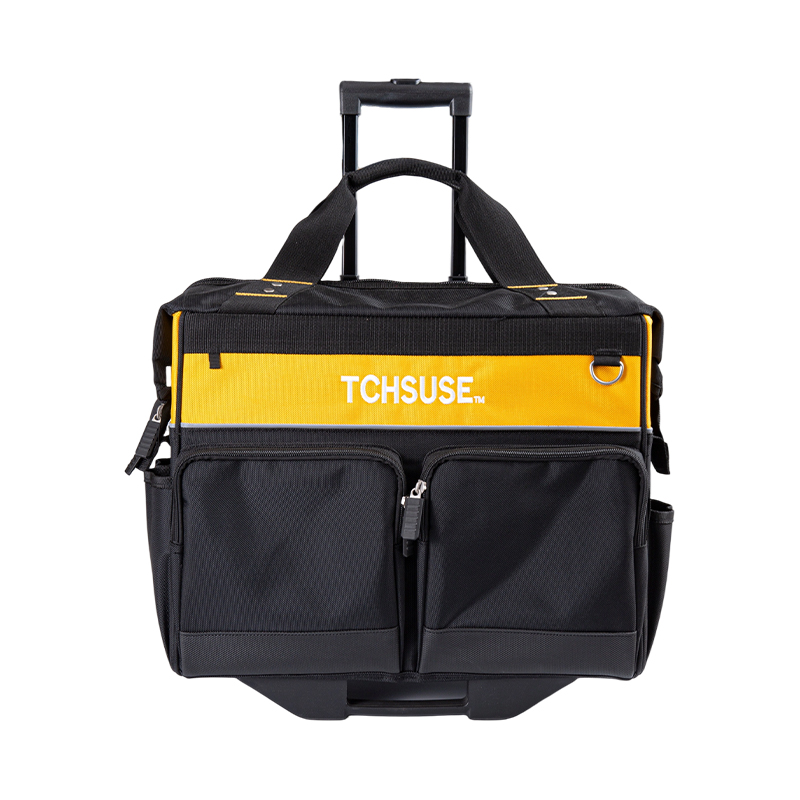Is a rolling tool bag suitable for use on construction sites or in outdoor environments?
Structural Stability of the Steel Handle Tool Bag
The steel handle tool bag is designed to ensure reliable structural stability, especially for users who frequently transport heavy equipment in demanding working environments. At Tengchi, the development of steel handle tool bags is based on long-term experience in producing durable tool-carrying solutions. By adopting high-strength steel pipes and reinforced fabric layers, the structure supports consistent load distribution, reducing the likelihood of deformation under frequent lifting or outdoor use. The steel pipe framework around the handle area and along the bag’s perimeter enhances rigidity, helping the bag maintain its shape even when it is filled with tools of varying sizes. The combination of a steel pipe skeleton and a reinforced base section contributes to overall stability, giving workers confidence in its continuous usability across long-term industrial operations.
Load-Bearing Capacity and Long-Term Durability
The load-bearing performance of a steel handle tool bag is closely related to the material quality, pipe thickness, and construction technique used by the manufacturer. Tengchi adopts steel pipes with stable tensile characteristics, allowing the frame to withstand continuous mechanical stress generated by heavy hand tools, wrenches, testing instruments, and construction accessories. The pipe structure is manufactured to resist bending forces, making the bag suitable for long-term heavy-duty applications. In addition, the bag body fabric and stitching are upgraded with abrasion-resistant materials to align with the strength of the steel frame. This helps ensure that fabric components do not degrade faster than the metal structure, resulting in a coordinated level of durability across the entire product. Such design considerations make the steel handle tool bag a dependable option for technicians who work in construction, electrical maintenance, or outdoor installation scenarios.
Key Factors Influencing Steel Pipe Load-Bearing Performance
| Factor |
Description |
| Pipe wall thickness |
Affects bending resistance and structural rigidity |
| Steel material grade |
Determines tensile strength and fatigue resistance |
| Frame connection method |
Impacts overall stability and alignment |
| Bag weight distribution |
Influences deformation rate during long-term use |
Resistance to Deformation During Continuous Use
A common concern regarding steel handle tool bags is whether the steel pipe frame will deform after extended use. In industrial settings, tool bags are frequently lifted, placed on uneven ground, exposed to vibration, or subjected to impact during transportation. Although these factors can challenge frame stability, a well-constructed steel pipe structure can maintain its shape for prolonged periods. Tengchi’s manufacturing approach includes testing for frame deformation, applying simulated load cycles to evaluate how the pipe reacts to repeated stress. These assessments aim to confirm that the bag can withstand the repetitive force caused by carrying heavy tools. The frame is also designed to distribute mechanical pressure across multiple contact points, reducing excessive localized stress. As a result, the steel handle tool bag is engineered to remain structurally stable, even when used intensively across various job sites.
Reinforcement of Critical Stress Areas
The steel handle tool bag incorporates reinforcement in areas that typically experience the most mechanical pressure. The joint between the handle pipe and the base frame is one of the components most prone to structural wear. To address this, Tengchi employs welding, riveting, or enhanced mechanical fasteners to strengthen these joints. This approach reduces the risk of loosening or bending during continuous lifting. In addition to reinforcing the handle joints, internal support panels and layered stitching around the frame anchors help distribute pressure throughout the bag body. This method minimizes stress concentration and ensures the interface between the fabric and the steel pipe frame functions cohesively. The reinforcement strategy contributes significantly to reducing deformation, supporting the long-term reliability of the tool bag in professional applications.
Typical Reinforced Areas in Steel Handle Tool Bags
| Area |
Reinforcement Method |
Purpose |
| Handle joints |
Welding or mechanical fastening |
Prevent loosening |
| Frame corners |
Steel brackets or layered stitching |
Improve rigidity |
| Bag base |
Thickened plate or molded insert |
Maintain shape under load |
| Side walls |
Multilayer fabric |
Prevent collapse |
Adaptability to Outdoor and High-Intensity Environments
A steel handle tool bag is frequently used outdoors, where environmental conditions such as humidity, dust, and temperature fluctuations can influence material stability. To address these variables, the steel pipe frame is often coated with protective layers that reduce oxidation and surface wear. Tengchi emphasizes corrosion-resistant finishing processes to extend the structural lifespan of the frame. Meanwhile, the bag’s fabric is selected for abrasion resistance and moisture protection, complementing the durability of the steel components. This combination enables the tool bag to function reliably in outdoor environments such as construction sites, power maintenance zones, industrial workshops, or long-distance repair operations. Even under high-intensity conditions, the steel frame is designed to retain its structural integrity, maintaining tool organization and preventing collapse when carrying heavy items.
Interaction Between the Steel Pipe Frame and Interior Organization
The steel handle tool bag’s rigid frame influences not only structural stability but also interior organization. The frame maintains the bag’s shape, making it easier to design compartments, pockets, and dividers that technicians can access efficiently. Tengchi integrates multi-pocket structures and large compartments that rely on the frame to stay upright and accessible. This allows workers to retrieve or store tools quickly, which is particularly beneficial during time-sensitive maintenance tasks. The steel frame helps prevent the interior layout from becoming distorted when the bag is fully loaded. As a result, the organization system remains reliable, supporting both heavy and lightweight tools without compromising the usability of the bag.
Manufacturing Precision and Its Impact on Stability
The structural reliability of a steel handle tool bag depends heavily on manufacturing precision. Small deviations in pipe diameter, connection angle, or frame alignment can affect long-term deformation resistance. Tengchi utilizes specialized production techniques to ensure consistent pipe bending, uniform welding, and stable assembly. Quality assessments include verifying frame symmetry, measuring tolerance levels, and ensuring that the handle area is aligned with the load-bearing path of the bag. Through this level of precision, the steel pipe frame can function as intended, holding its shape even when exposed to repeated mechanical stress. This manufacturing consistency plays a decisive role in determining how well the tool bag performs over months or years of professional use.
When Deformation May Occur and How It Is Prevented
Although steel handle tool bags are designed for stability, certain conditions can increase the likelihood of deformation. Overloading beyond recommended weight limits, applying sudden impact forces, or exposing the frame to corrosive substances can weaken structural components. To mitigate these risks, manufacturers provide usage guidelines and specify load capacities based on testing data. Tengchi incorporates protective design features such as reinforced corners, anti-impact bases, and corrosion-resistant coatings to extend the lifespan of the steel frame. Correct usage practices, combined with the bag’s engineered features, help prevent deformation and maintain structural reliability throughout the tool bag’s service life.


 English
English 